
AlphaLISA Human & Mouse Insulin Detection Kit, 5,000 Assay Points

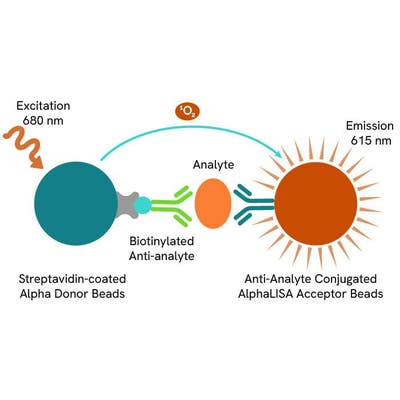
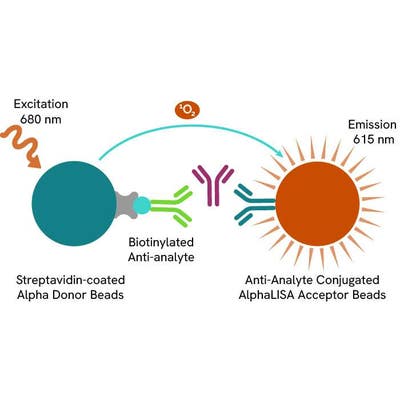 View All
View All
AlphaLISA Human & Mouse Insulin Detection Kit, 5,000 Assay Points

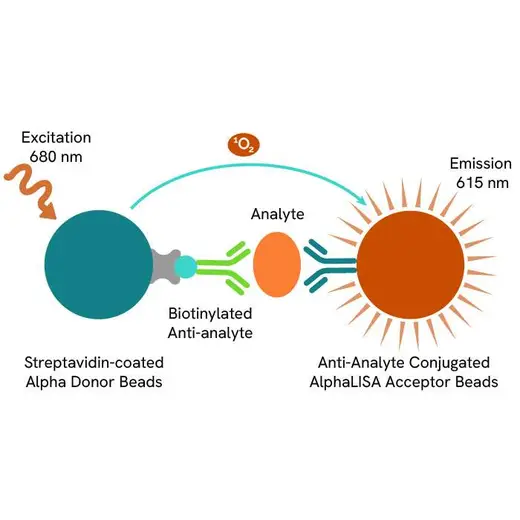
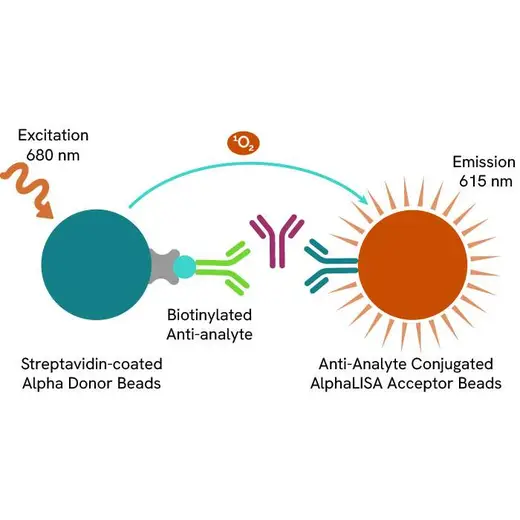





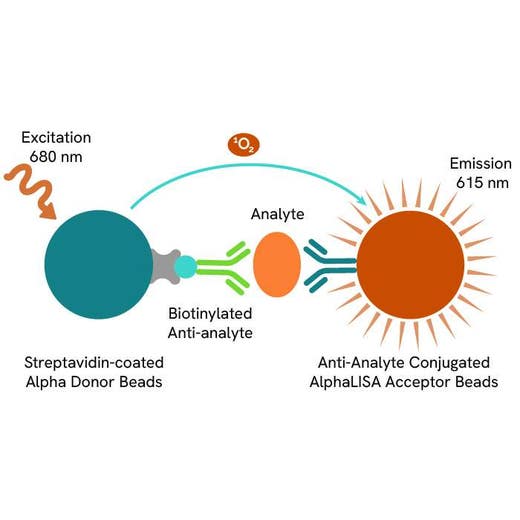
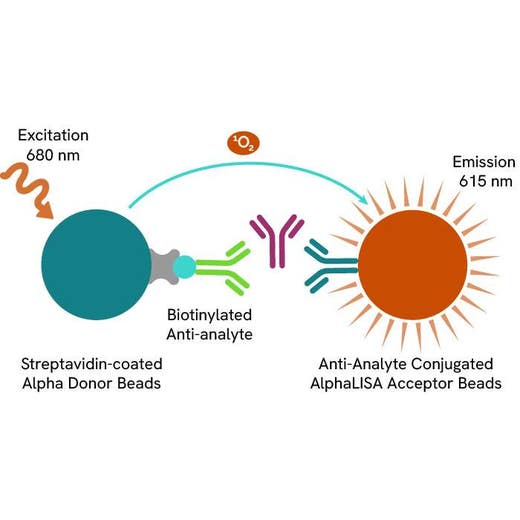




The AlphaLISA™ immunoassay kit for human and mouse insulin enables the quantitative determination of insulin in buffer, cell culture media, serum, cell lysates and cell supernatants using a homogeneous AlphaLISA assay (no wash steps).
This kit is the new and improved version of the AL204 and AL350 kits.
For research use only. Not for use in diagnostic procedures. All products to be used in accordance with applicable laws and regulations including without limitation, consumption and disposal requirements under European REACH regulations (EC 1907/2006).
| Feature | Specification |
|---|---|
| Application | Protein Quantification |
| Dynamic Range | 34 - 30,000 pg/mL |
| Limit of Detection | 15 pg/mL |
| Limit of Quantification | 34 pg/mL |
| Sample Volume | 5 µL |
The AlphaLISA™ immunoassay kit for human and mouse insulin enables the quantitative determination of insulin in buffer, cell culture media, serum, cell lysates and cell supernatants using a homogeneous AlphaLISA assay (no wash steps).
This kit is the new and improved version of the AL204 and AL350 kits.
For research use only. Not for use in diagnostic procedures. All products to be used in accordance with applicable laws and regulations including without limitation, consumption and disposal requirements under European REACH regulations (EC 1907/2006).







AlphaLISA Human & Mouse Insulin Detection Kit, 5,000 Assay Points







AlphaLISA Human & Mouse Insulin Detection Kit, 5,000 Assay Points







Product information
Overview
Insulin is produced in the pancreas by Beta-cells of the Langherans islets as a 110 amino acid proinsulin hormone. Proinsulin is post-translationally cleaved into two chains (peptide A of 21 amino acids and peptide B of 30 amino acids) that are covalently bonded through two disulfide bonds and released when blood glucose levels rise. After 30 minutes, the blood concentration rises from roughly 50 pmol/L to 300-400 pmol/L. Insulin regulates glucose and lipid metabolism and has been linked to several disorders, including diabetes, heart disease, and obesity.
Formats
- Our 100 assay point kit allows you to run 100 wells in 96-well format, using a 100 µL reaction volume (10 µL of sample).
- Our 500 assay point kit allows you to run 500 wells in 96-well or 384-well format, using a 50 µL reaction volume (5 µL of sample).
- Our 5,000 assay point kit allows you to run 5,000 wells in 96-well or 384-well format, using a 50 µL reaction volume (5 µL of sample).
Features
- No-wash steps, no separation steps
- ELISA alternative technology
- Sensitive detection
- Broad sample compatibility
- Small sample volume
- Results in less than 3 hours
- Half the time of an ELISA assay
AlphaLISA technology allows the detection of molecules of interest in a no-wash, highly sensitive, quantitative assay. In an AlphaLISA assay, a biotinylated anti-analyte antibody binds to the Streptavidin-coated Donor beads while another anti-analyte antibody is conjugated to AlphaLISA Acceptor beads. In the presence of the analyte, the beads come into close proximity. The excitation of the Donor beads causes the release of singlet oxygen molecules that triggers a cascade of energy transfer in the Acceptor beads, resulting in a sharp peak of light emission at 615 nm.
Specifications
| Application |
Protein Quantification
|
|---|---|
| Automation Compatible |
Yes
|
| Brand |
AlphaLISA
|
| Detection Modality |
Alpha
|
| Dynamic Range |
34 - 30,000 pg/mL
|
| Limit of Detection |
15 pg/mL
|
| Limit of Quantification |
34 pg/mL
|
| Product Group |
Kit
|
| Sample Volume |
5 µL
|
| Shipping Conditions |
Shipped in Blue Ice
|
| Target |
Insulin
|
| Target Class |
Biomarkers
|
| Target Species |
Human
Mouse
|
| Technology |
Alpha
|
| Therapeutic Area |
Metabolic
|
| Unit Size |
5,000 Assay Points
|
Image gallery






AlphaLISA Human & Mouse Insulin Detection Kit, 5,000 Assay Points






AlphaLISA Human & Mouse Insulin Detection Kit, 5,000 Assay Points






Video gallery

AlphaLISA Human & Mouse Insulin Detection Kit, 5,000 Assay Points

AlphaLISA Human & Mouse Insulin Detection Kit, 5,000 Assay Points

Resources
Are you looking for resources, click on the resource type to explore further.


How can we help you?
We are here to answer your questions.






























